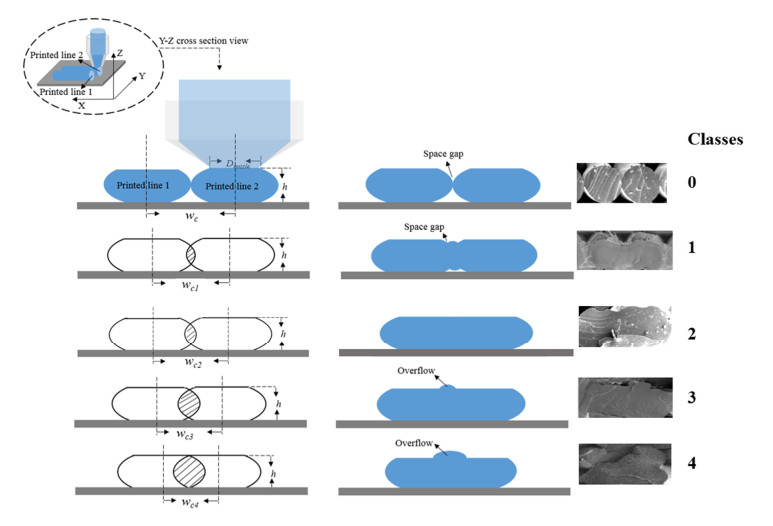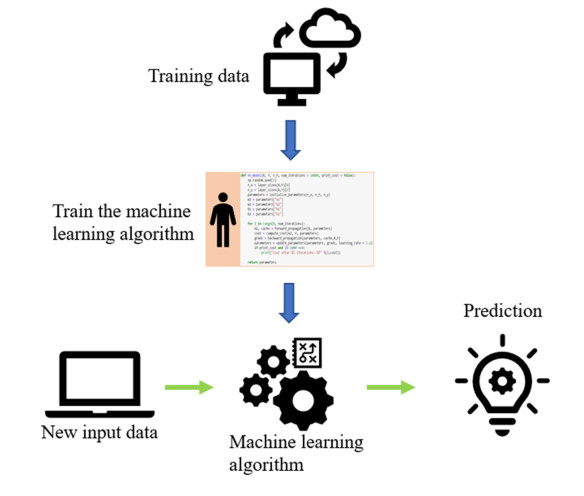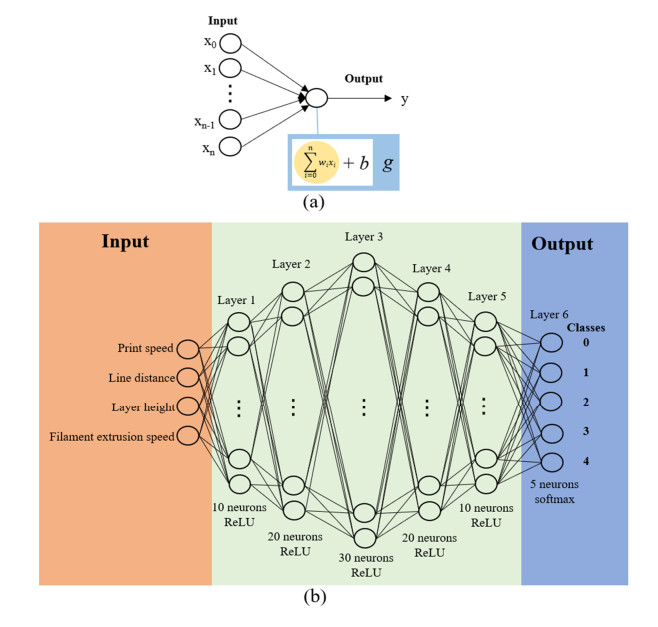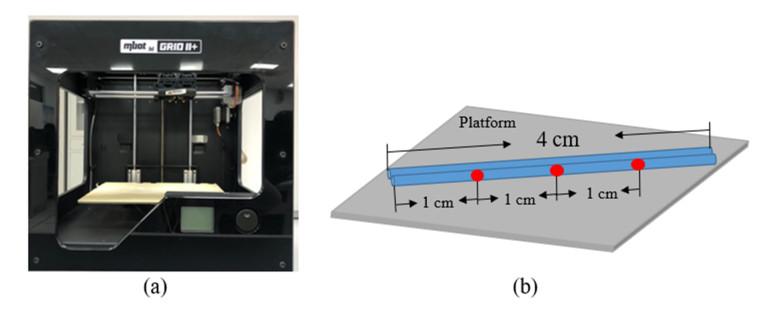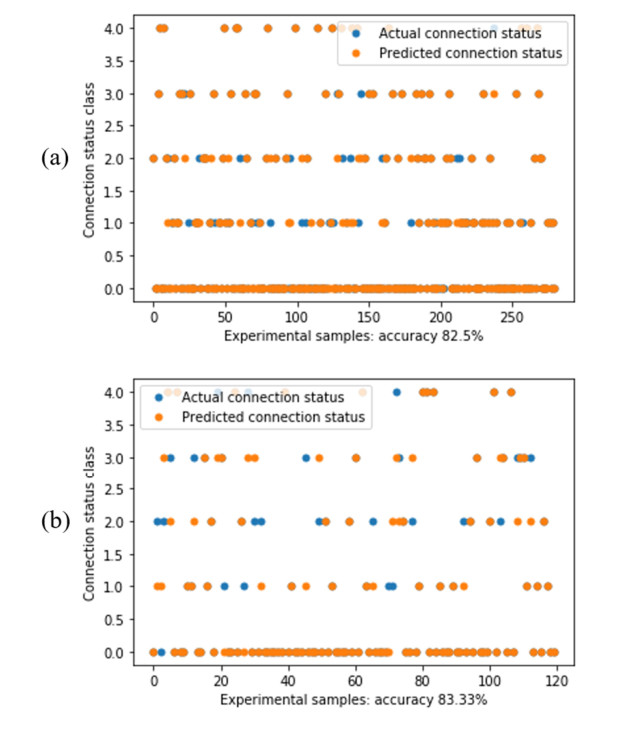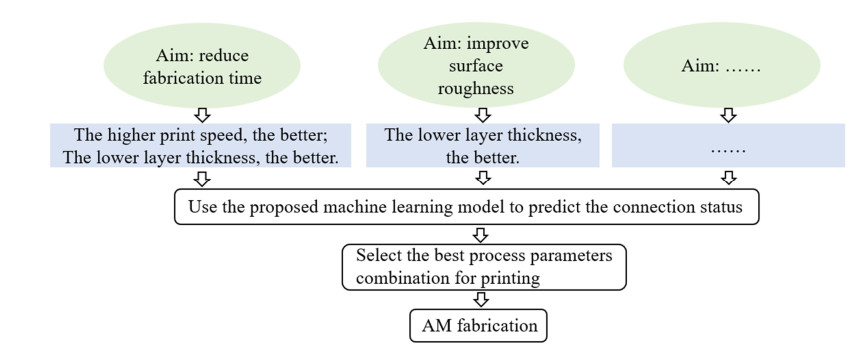| 1.
|
Lequn Chen, Xiling Yao, Peng Xu, Seung Ki Moon, Guijun Bi,
Rapid surface defect identification for additive manufacturing with in-situ point cloud processing and machine learning,
2021,
16,
1745-2759,
50,
10.1080/17452759.2020.1832695
|
|
| 2.
|
Pin-Chuan Chen, Ching Chan Chou, Chung Hsuan Chiang,
Systematically Studying Dissolution Process of 3D Printed Acrylonitrile Butadiene Styrene (ABS) Mold for Creation of Complex and Fully Transparent Polydimethylsiloxane (PDMS) Fluidic Devices,
2021,
1976-0280,
10.1007/s13206-021-00009-0
|
|
| 3.
|
Yanzhou Fu, Austin Downey, Lang Yuan, Avery Pratt, Yunusa Balogun,
In situ monitoring for fused filament fabrication process: A review,
2021,
38,
22148604,
101749,
10.1016/j.addma.2020.101749
|
|
| 4.
|
Jingchao Jiang, Yongsheng Ma,
Path Planning Strategies to Optimize Accuracy, Quality, Build Time and Material Use in Additive Manufacturing: A Review,
2020,
11,
2072-666X,
633,
10.3390/mi11070633
|
|
| 5.
|
George Papazetis, George-Christopher Vosniakos,
Improving deposition quality at higher rates in material extrusion additive manufacturing,
2020,
111,
0268-3768,
1221,
10.1007/s00170-020-06182-0
|
|
| 6.
|
Jingchao Jiang, Yun-Fei Fu,
A short survey of sustainable material extrusion additive manufacturing,
2020,
1448-4846,
1,
10.1080/14484846.2020.1825045
|
|
| 7.
|
Jingchao Jiang, Stephen T. Newman, Ray Y. Zhong,
A review of multiple degrees of freedom for additive manufacturing machines,
2021,
34,
0951-192X,
195,
10.1080/0951192X.2020.1858510
|
|
| 8.
|
JC Jiang, Xinghua Xu, Wanzhi Rui, Zhengrong Jia, Zuowei Ping, O.P. Malik,
Line Width Mathematical Model in Fused Deposition Modelling for Precision Manufacturing,
2021,
231,
2267-1242,
03003,
10.1051/e3sconf/202123103003
|
|
| 9.
|
A. Equbal, S. Akhter, Md. A. Equbal, A. K. Sood,
2021,
Chapter 23,
978-3-030-68023-7,
445,
10.1007/978-3-030-68024-4_23
|
|
| 10.
|
Huiying He, Jun Lu, Yi Zhang, Jing Han, Zhuang Zhao,
Quantitative prediction of additive manufacturing deposited layer offset based on passive visual imaging and deep residual network,
2021,
72,
15266125,
195,
10.1016/j.jmapro.2021.09.049
|
|
| 11.
|
Yuhang Yang, Varun A. Kelkar, Hemangg S. Rajput, Adriana C. Salazar Coariti, Kimani C. Toussaint, Chenhui Shao,
Machine-learning-enabled geometric compliance improvement in two-photon lithography without hardware modifications,
2022,
76,
15266125,
841,
10.1016/j.jmapro.2022.02.046
|
|
| 12.
|
Tariku Sinshaw Tamir, Gang Xiong, Qihang Fang, Xisong Dong, Zhen Shen, Fei-Yue Wang,
A feedback-based print quality improving strategy for FDM 3D printing: an optimal design approach,
2022,
120,
0268-3768,
2777,
10.1007/s00170-021-08332-4
|
|
| 13.
|
Sandeep Suresh Babu, Abdel-Hamid I. Mourad, Khalifa H. Harib,
2022,
Unauthorized usage and cybersecurity risks in additively manufactured composites: Toolpath reconstruction using imaging and machine learning techniques,
978-1-6654-1801-0,
1,
10.1109/ASET53988.2022.9734313
|
|
| 14.
|
Xiaoyu Li, Mengna Zhang, Mingxia Zhou, Jing Wang, Weixin Zhu, Chuan Wu, Xiao Zhang,
Qualify assessment for extrusion-based additive manufacturing with 3D scan and machine learning,
2023,
90,
15266125,
274,
10.1016/j.jmapro.2023.01.025
|
|
| 15.
|
Kyudong Kim, Heena Noh, Kijung Park, Hyun Woo Jeon, Sunghoon Lim,
Characterization of power demand and energy consumption for fused filament fabrication using CFR-PEEK,
2022,
28,
1355-2546,
1394,
10.1108/RPJ-07-2021-0188
|
|
| 16.
|
Nectarios Vidakis, Markos Petousis, Nikolaos Mountakis, Emmanuel Maravelakis, Stefanos Zaoutsos, John D. Kechagias,
Mechanical response assessment of antibacterial PA12/TiO2 3D printed parts: parameters optimization through artificial neural networks modeling,
2022,
121,
0268-3768,
785,
10.1007/s00170-022-09376-w
|
|
| 17.
|
Jingjing Yan, Zhiling Yuan, Qiang Liu, Guoliang Liu, Lei Li,
Printing Ready Topology Optimization for Material Extrusion Polymer Additive Manufacturing,
2021,
2329-7662,
10.1089/3dp.2021.0189
|
|
| 18.
|
Zhuo Wang, Wenhua Yang, Qingyang Liu, Yingjie Zhao, Pengwei Liu, Dazhong Wu, Mihaela Banu, Lei Chen,
Data-driven modeling of process, structure and property in additive manufacturing: A review and future directions,
2022,
77,
15266125,
13,
10.1016/j.jmapro.2022.02.053
|
|
| 19.
|
Dongxiao Wang, Haolei Wang, Yuqing Wang,
2021,
Continuity Path Planning for 3D Printed Lightweight Infill Structures,
978-1-6654-2498-1,
959,
10.1109/TOCS53301.2021.9688877
|
|
| 20.
|
Jingchao Jiang,
A survey of machine learning in additive manufacturing technologies,
2023,
0951-192X,
1,
10.1080/0951192X.2023.2177740
|
|
| 21.
|
Di Wu, Wanying Zhang, Heming Jia, Xin Leng,
Simultaneous Feature Selection and Support Vector Machine Optimization Using an Enhanced Chimp Optimization Algorithm,
2021,
14,
1999-4893,
282,
10.3390/a14100282
|
|
| 22.
|
Sandeep Suresh Babu, Abdel-Hamid I. Mourad, Khalifa H. Harib, Sanjairaj Vijayavenkataraman,
Recent developments in the application of machine-learning towards accelerated predictive multiscale design and additive manufacturing,
2023,
18,
1745-2759,
10.1080/17452759.2022.2141653
|
|
| 23.
|
Jingchang Li, Xiaoge Zhang, Qi Zhou, Felix T.S. Chan, Zhen Hu,
A feature-level multi-sensor fusion approach for in-situ quality monitoring of selective laser melting,
2022,
84,
15266125,
913,
10.1016/j.jmapro.2022.10.050
|
|
| 24.
|
Ying Zhang, Mutahar Safdar, Jiarui Xie, Jinghao Li, Manuel Sage, Yaoyao Fiona Zhao,
A systematic review on data of additive manufacturing for machine learning applications: the data quality, type, preprocessing, and management,
2022,
0956-5515,
10.1007/s10845-022-02017-9
|
|
| 25.
|
Chenxi Tian, Tianjiao Li, Jenniffer Bustillos, Shonak Bhattacharya, Talia Turnham, Jingjie Yeo, Atieh Moridi,
Data‐Driven Approaches Toward Smarter Additive Manufacturing,
2021,
3,
2640-4567,
2100014,
10.1002/aisy.202100014
|
|
| 26.
|
Tariku Sinshaw Tamir, Gang Xiong, Qihang Fang, Yong Yang, Zhen Shen, MengChu Zhou, Jingchao Jiang,
Machine-learning-based monitoring and optimization of processing parameters in 3D printing,
2022,
0951-192X,
1,
10.1080/0951192X.2022.2145019
|
|
| 27.
|
Jian Qin, Fu Hu, Ying Liu, Paul Witherell, Charlie C.L. Wang, David W. Rosen, Timothy W. Simpson, Yan Lu, Qian Tang,
Research and application of machine learning for additive manufacturing,
2022,
52,
22148604,
102691,
10.1016/j.addma.2022.102691
|
|
| 28.
|
Reem Ashima, Abid Haleem, Mohd Javaid, Shanay Rab,
Understanding the role and capabilities of Internet of Things-enabled Additive Manufacturing through its application areas,
2022,
5,
25425048,
137,
10.1016/j.aiepr.2021.12.001
|
|
| 29.
|
Nectarios Vidakis, Constantine David, Markos Petousis, Dimitrios Sagris, Nikolaos Mountakis, Amalia Moutsopoulou,
The effect of six key process control parameters on the surface roughness, dimensional accuracy, and porosity in material extrusion 3D printing of polylactic acid: Prediction models and optimization supported by robust design analysis,
2022,
5,
26669129,
100104,
10.1016/j.aime.2022.100104
|
|
| 30.
|
William Jordan Wright, Joshua Darville, Nurcin Celik, Hilmar Koerner, Emrah Celik,
In-situ optimization of thermoset composite additive manufacturing via deep learning and computer vision,
2022,
58,
22148604,
102985,
10.1016/j.addma.2022.102985
|
|
| 31.
|
Rita Drissi-Daoudi, Vigneashwara Pandiyan, Roland Logé, Sergey Shevchik, Giulio Masinelli, Hossein Ghasemi-Tabasi, Annapaola Parrilli, Kilian Wasmer,
Differentiation of materials and laser powder bed fusion processing regimes from airborne acoustic emission combined with machine learning,
2022,
17,
1745-2759,
181,
10.1080/17452759.2022.2028380
|
|
| 32.
|
2021,
10.54718/NEAF9531
|
|
| 33.
|
Keshav Lalit Ameta, Vijendra Singh Solanki, Vineeta Singh, Ahanthem Priyanca Devi, R.S. Chundawat, Shafiul Haque,
Critical appraisal and systematic review of 3D & 4D printing in sustainable and environment-friendly smart manufacturing technologies,
2022,
34,
22149937,
e00481,
10.1016/j.susmat.2022.e00481
|
|
| 34.
|
Xiao-Yu Li, Fu-Long Liu, Meng-Na Zhang, Ming-Xia Zhou, Chuan Wu, Xiao Zhang, Pawel Malinowski,
A Combination of Vision- and Sensor-Based Defect Classifications in Extrusion-Based Additive Manufacturing,
2023,
2023,
1687-7268,
1,
10.1155/2023/1441936
|
|
| 35.
|
Victor Beloshenko, Yan Beygelzimer, Vyacheslav Chishko, Bogdan Savchenko, Nadiya Sova, Dmytro Verbylo, Iurii Vozniak,
Mechanical Properties of Thermoplastic Polyurethane-Based Three-Dimensional-Printed Lattice Structures: Role of Build Orientation, Loading Direction, and Filler,
2021,
2329-7662,
10.1089/3dp.2021.0031
|
|
| 36.
|
Thang Q. Tran, Feng Lin Ng, Justin Tan Yu Kai, Stefanie Feih, Mui Ling Sharon Nai,
Tensile Strength Enhancement of Fused Filament Fabrication Printed Parts: A Review of Process Improvement Approaches and Respective Impact,
2022,
54,
22148604,
102724,
10.1016/j.addma.2022.102724
|
|
| 37.
|
Zifan Geng, Peipei Wu, Hao Pan, Qi Zheng, Wenqiang Zuo, Wenhua Zhang, Wei She,
Robust layer interface in cement additive manufacturing via silicate penetration and precipitation,
2022,
214,
02641275,
110380,
10.1016/j.matdes.2022.110380
|
|
| 38.
|
Yaozhong Wu, Jianguang Fang, Chi Wu, Cunyi Li, Guangyong Sun, Qing Li,
Additively manufactured materials and structures: A state-of-the-art review on their mechanical characteristics and energy absorption,
2023,
246,
00207403,
108102,
10.1016/j.ijmecsci.2023.108102
|
|
| 39.
|
Mutahar Safdar, Guy Lamouche, Padma Polash Paul, Gentry Wood, Yaoyao Fiona Zhao,
2023,
Chapter 3,
978-3-031-32153-5,
45,
10.1007/978-3-031-32154-2_3
|
|
| 40.
|
Mandar Golvaskar, Sammy A. Ojo, Manigandan Kannan,
Recent Advancements in Material Waste Recycling: Conventional, Direct Conversion, and Additive Manufacturing Techniques,
2024,
9,
2313-4321,
43,
10.3390/recycling9030043
|
|
| 41.
|
Yingxin Ma, Yuan Yao, Jinxiu Yang, Hang Zhang, Beishui Liao,
Global Continuous Toolpath Planning with Controllable Local Directions,
2023,
164,
00104485,
103593,
10.1016/j.cad.2023.103593
|
|
| 42.
|
B. K. Sivaraj, R. Nitheesh Kumar, V. Karthik,
2024,
9781394197910,
49,
10.1002/9781394198085.ch3
|
|
| 43.
|
Ziadia Abdelhamid, Habibi Mohamed, Sousso Kelouwani,
The use of machine learning in process–structure–property modeling for material extrusion additive manufacturing: a state-of-the-art review,
2024,
46,
1678-5878,
10.1007/s40430-023-04637-5
|
|
| 44.
|
Baris Ördek, Yuri Borgianni, Eric Coatanea,
Machine learning-supported manufacturing: a review and directions for future research,
2024,
12,
2169-3277,
10.1080/21693277.2024.2326526
|
|
| 45.
|
Md. Asif Equbal, Azhar Equbal, Zahid A. Khan, Irfan Anjum Badruddin,
Machine learning in Additive Manufacturing: A Comprehensive insight,
2024,
25888404,
10.1016/j.ijlmm.2024.10.002
|
|
| 46.
|
Jiarui Xie, Chonghui Zhang, Manuel Sage, Mutahar Safdar, Yaoyao Fiona Zhao,
A sequential cross-product knowledge accumulation, extraction and transfer framework for machine learning-based production process modelling,
2024,
62,
0020-7543,
4181,
10.1080/00207543.2023.2254854
|
|
| 47.
|
Nandita Dasgupta, Vineeta Singh, Shivendu Ranjan, Taijshee Mishra, Bhartendu Nath Mishra,
2024,
9780128203019,
1,
10.1016/B978-0-12-820301-9.00002-1
|
|
| 48.
|
Avinash Selot, R. K. Dwivedi,
Machine learning and sensor-based approach for defect detection in MEX additive manufacturing process- A Review,
2023,
45,
1678-5878,
10.1007/s40430-023-04425-1
|
|
| 49.
|
Beyza Gavcar,
2024,
Chapter 8,
978-3-031-70934-0,
101,
10.1007/978-3-031-70935-7_8
|
|
| 50.
|
Izabela Rojek, Dariusz Mikołajewski, Marcin Kempiński, Krzysztof Galas, Adrianna Piszcz,
Emerging Applications of Machine Learning in 3D Printing,
2025,
15,
2076-3417,
1781,
10.3390/app15041781
|
|
| 51.
|
Onuchukwu Godwin Chike, Yee Jian Chin, Norhayati Ahmad, Wan Fahmin Faiz Wan Ali,
Impact of Machine/Deep Learning on Additive Manufacturing: Publication Trends, Bibliometric Analysis, and Literature Review (2013–2022),
2025,
6,
2662-2556,
10.1007/s43069-025-00440-1
|
|
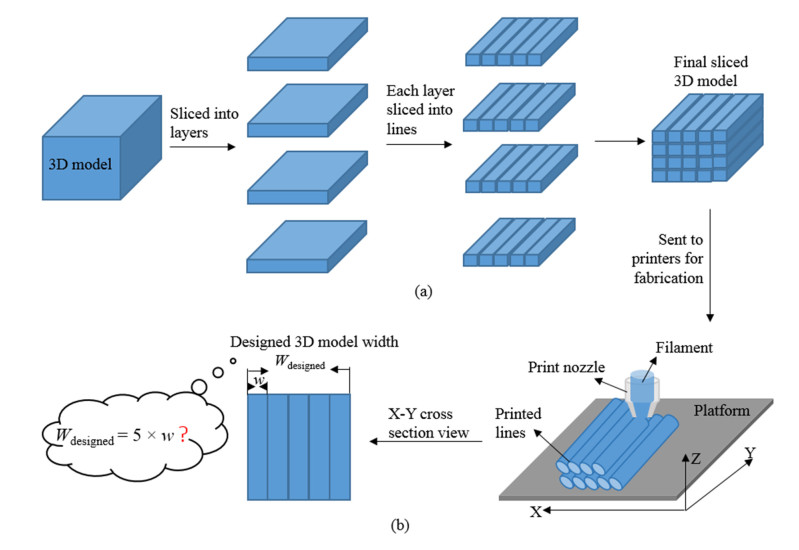









 DownLoad:
DownLoad:
